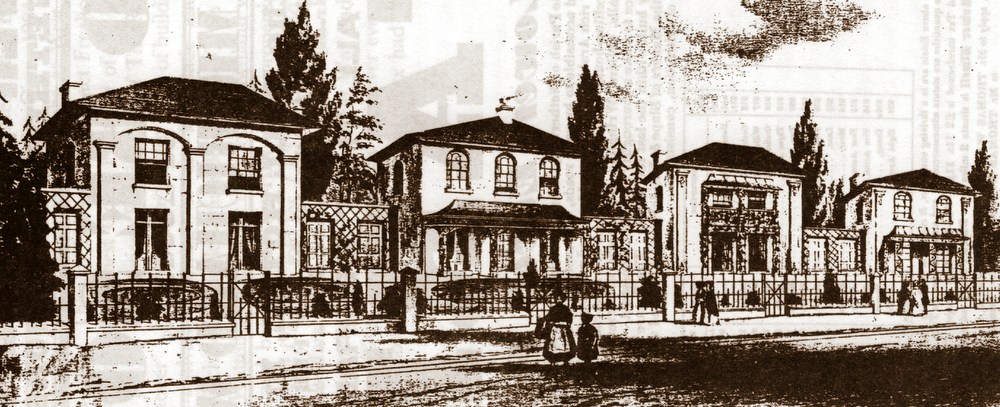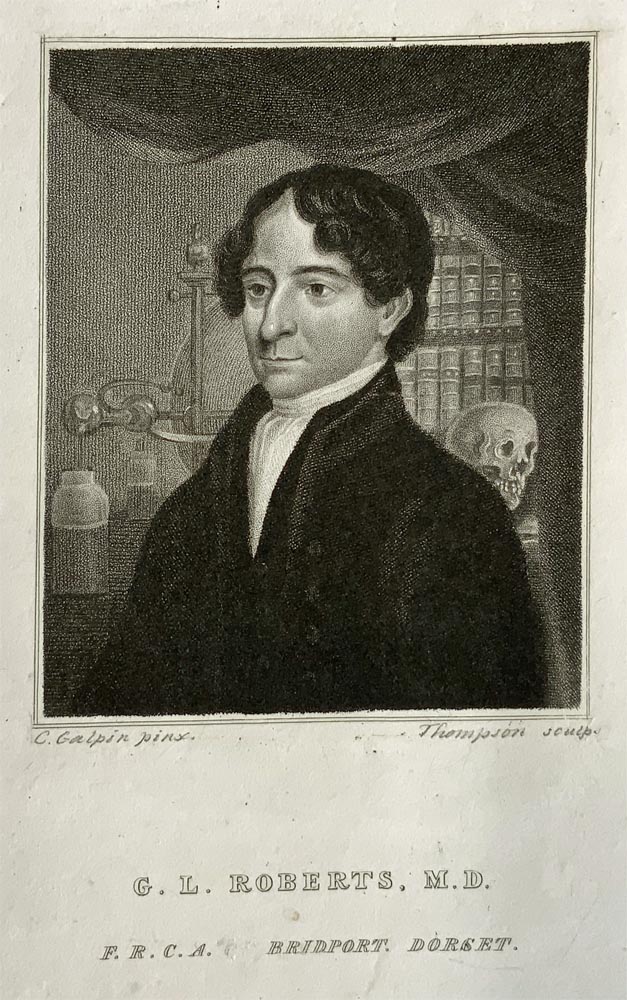A History of St. Andrew`s Church, Charmouth
INSCRIPTIONS ON A TOMB AT HIGHGATE CEMETERY, LONDON
Sacred to the Memory of Thomas Carter Galpin born Sep. 27th 1795 died May 13th 1850
also to Mary Jane daughter of the above born july 15th 1823 died Dec. 25th 1850
also Mary Hounsell died June 27th 1856 Aged 55 years.
N0te.�She was twin sister to Ann Frances, wife of Thomas Carter Galpin.
CHURCH or ST. LAURENCE AT UPWEY, NEAR WEYMOUTH
In the Churchyard an upright stone i In memory of , Joseph Galpin who departed this life February 3rd 1872 Aged 73 years
Also Ann widow of the above who died Nov. 28th 1879 Aged 76.
N0te.Brother of Thomas Carter Galpin. Henry Carter Galpin, son of Thomas Carter Galpin and his wife Ann Frances Hounsell, born at Charmouth June 1820. He was on a ship, belonging to his uncle, which was wrecked in the Channel, where he suffered from exposure for several days in the severest weather owing to which his health was injured and he emigrated to South Africa where he married Georgina Maria, the only daughter of George Luck of Cape Town and Stellenbosch, who owned much property there as
STAFFORDSHIRE AND DORSET 81 Thomas Carter Gazévin, born in 1795, Sep. 27, at Bridport, Dorset, son of Richard Galpin and Mary, daughter of William Carter, of Beaminster. After his marriage to Ann Frances, daughter of John Hounsel, Bailiff of Bridport, 10th July 1819, he took up his residence at Charmouth, where he had inherited a small pro perty from the Chilcotts. He had also inherited another estate at Beaminster from his mother. Late in life, having disposed of his landed estate, he moved up to London, where he died 13th May 1850 and was buried in Highgate Cemetery. He had a decided taste for art and science from his boy- hood and showed considerable talent for painting and lead- pencil drawing. He invented a method of producing a rapid effect in sketching by using a broad lead-pencil cut so as to make both broad and fine strokes, for which he gained the Isis Medal of the Royal Society of Art. However, the value of the invention was undermined by the introduction of Photography, and Sketching gradually went out of fashion. He was one of the first to take an interest in the fossils of the blue lias of Lyme Regis and prepared and presented to the British Museum a specimen of an Ichthyosaurus which was exhibited there for many years until recently it was exchanged for a foreign specimen. He introduced lithography into England, many of his sketches being reproduced by that process. He illustrated several books and at one time became notorious through his comic and political cartoons, one of which representing the King George IV being carried off by Old Nick came near getting him into trouble, in fact, he had to go into hiding for a time. His portrait by Pickersgill was exhibited in the Royal Academy. He was a friend of Lord Lovat who, as head of the Clan Fraser, made him an honorary member of the clan and a ` daguerreotype portrait (a process then recently introduced) shows him wearing the tartan on the occasion of his initiation. He was also a friend of Coleridge and of the poet Words- worth, who wrote the following epigram on seeing his broad- pencil sketches when he was staying at Rydall Mount on a visit to the Poet Laureate: " Great Artist thy genius such is I Divines will against it protest
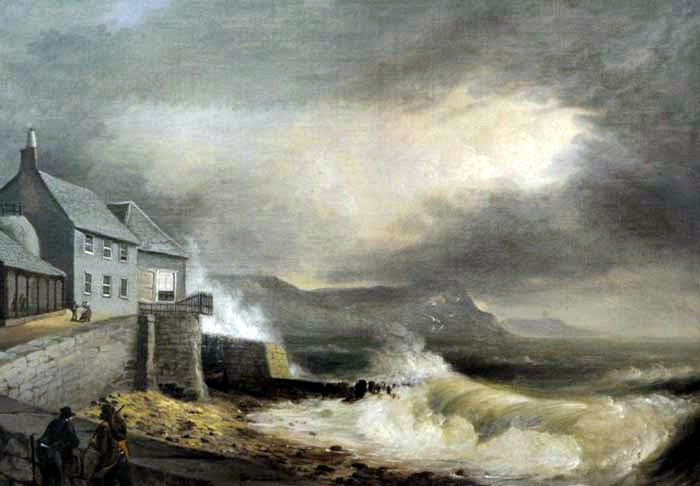
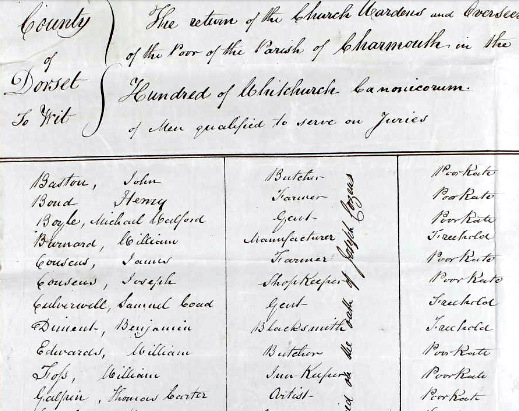
.jpg)
.jpg)
.jpg)
.jpg)
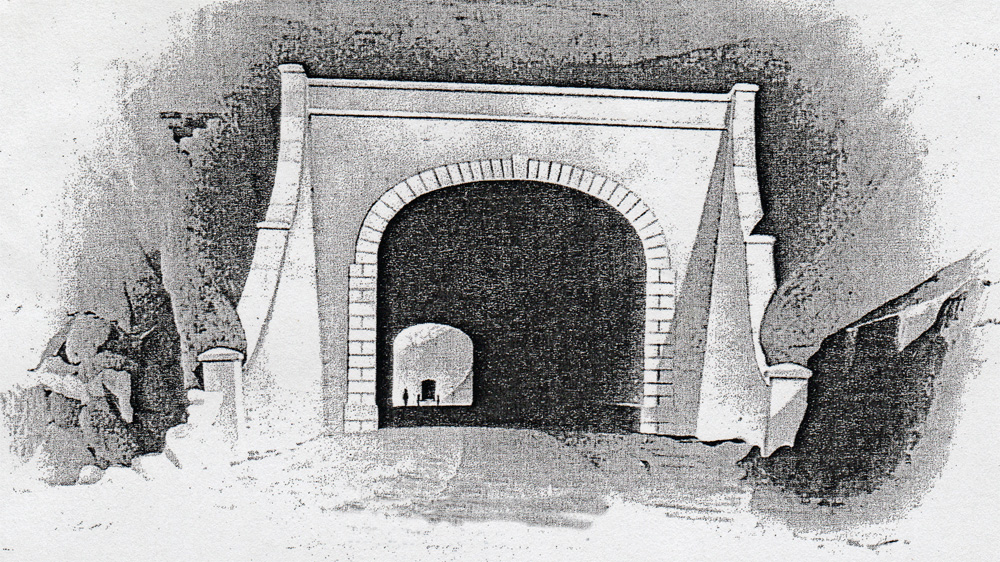
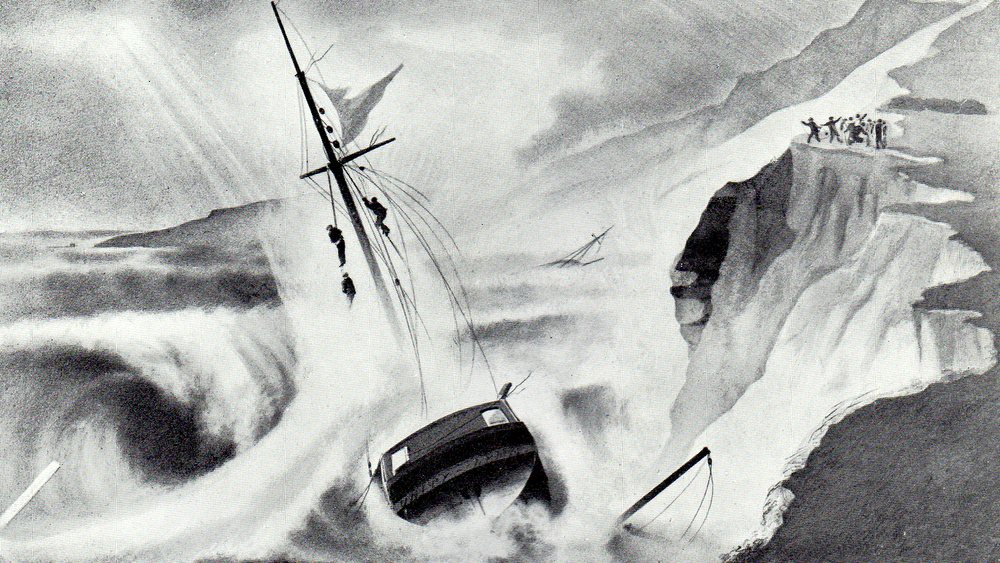
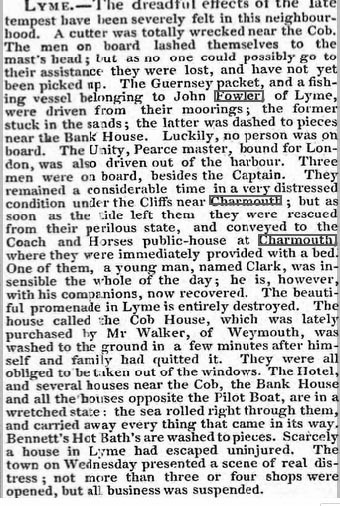
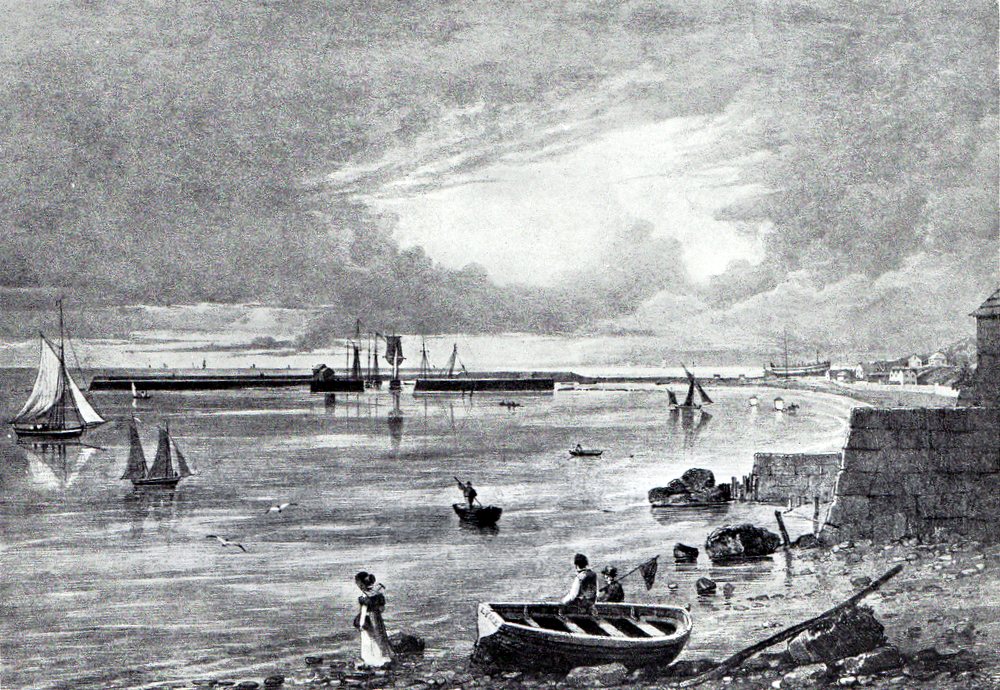
This picture of the Cobb was published in' 1825 by Carter Galpin of ('harmoufh. On the extreme right will be seen a vessel on the stocks in the shipbuilding yard, The figure in the foreground with her face to the sea and a geological hammer in her hand is probably intended for Mary Anning. Carter Galpin was a well known local draughtsman and printseller of the time. He is said to have been sell-taught and became the drawing-master of the district.
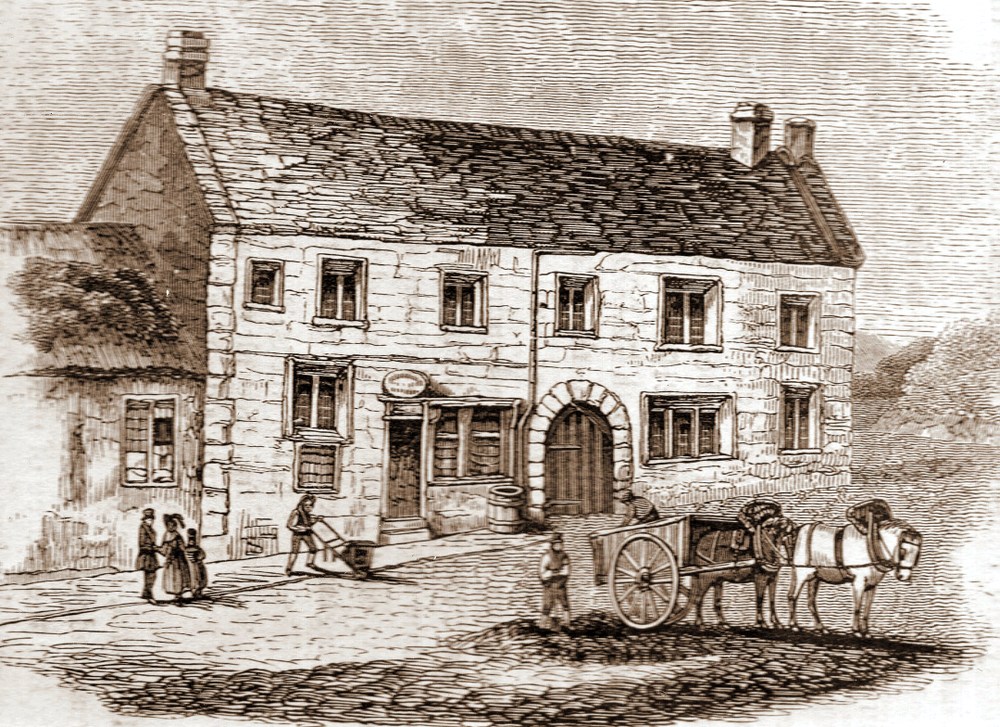
Thomas Carter Galpin, born in 1795, Sep. 27, at Bridport, Dorset, son of Richard Galpin and Mary, daughter of William Carter, of Beaminster.
After his marriage to Ann Frances, daughter of John Hounsel, Bailiff of Bridport, 10th July 1819, he took up his residence at Charmouth, where he had inherited a small pro perty from the Chilcotts. He had also inherited another estate at Beaminster from his mother.
Late in life, having disposed of his landed estate, he moved up to London, where he died 13th May 1850 and was buried in Highgate Cemetery.
He had a decided taste for art and science from his boyhood and showed considerable talent for painting and lead- pencil drawing. He invented a method of producing a rapid effect in sketching by using a broad lead-pencil cut so as to make both broad and fine strokes, for which he gained the Isis Medal of the Royal Society of Art. However, the value of the invention was undermined by the introduction of Photography, and Sketching gradually went out of fashion.
He was one of the first to take an interest in the fossils of the blue lias of Lyme Regis and prepared and presented to the British Museum a specimen of an Ichthyosaurus which was exhibited there for many years until recently it was exchanged for a foreign specimen. He introduced lithography into England, many of his sketches being reproduced by that process. He illustrated several books and at one time became notorious through his comic and political cartoons, one of which representing the King George IV being carried off by Old Nick came near getting him into trouble, in fact, he had to go into hiding for a time. His portrait by Pickersgill was exhibited in the Royal Academy.
He was a friend of Lord Lovat who, as head of the Clan Fraser, made him an honorary member of the clan and a ` daguerreotype portrait (a process then recently introduced) shows him wearing the tartan on the occasion of his initiation.
He was also a friend of Coleridge and of the poet Wordsworth, who wrote the following epigram on seeing his broad- pencil sketches when he was staying at Rydall Mount on a visit to the Poet Laureate:
" Great Artist thy genius such is I Divines will against it protest
Thou hast certainly shown by thy touches
That the Maud way may sometimes be best.� Hartley Colridge, Sep. 23, 1846.
He was tall and handsome with dark hair and dark blue eyes. i He was exceedingly well informed and intelligent and his interesting conversation and agreeable manners made him a welcome everywhere.
His wife died at Charmouth at the age of 41 years. The stables happening to catch fire the terrified horses by their excitement gave her a fright which brought on a fatal illness.
]oseph Galpin, architect, who wrote a book, long a standard work on architecture, in conjunction with his brother Charles built a large part of Bridport, Allington, the Manor House at Chideock, the Crescent at Weymouth, etc. Most of their houses can be distinguished by their iron railings of a special pattern with ivy leaves and berries. He built and owned Portville, between Bridport and West Bay, and lived there in a house now known as Belmont. He married first Sarah Green of Burton Bradstock, and had one daughter Sarah, who died at Bridport unmarried. He married as his second wife Sarah, daughter of Joseph Sprake of Allington buried at Allington), and third, Ann Swain. He died, aged 73, and was buried in the churchyard at Upwey, near Weymouth, in 1872. His third wife survived him and died in 1879, aged 76. (One daughter, Sarah Swain Galpin, born 26 March 18 3 3.)
Ann Frances Hounsell, born Dec. 1800 and died 30 May , 1842 at Charmouth, was the daughter of John Hounsell of Bridport, whose father was also ]ohn Hounsell.
Mary Hounsell, twin sister of Ann Frances, died 27 June 1 8 56, aged 55 years, buried at Highgate.
Elizabeth, another sister, married Frank Slade of Powerstock.
INSCRIPTIONS ON TOMB AT HIGHGATE CEMETERY, LONDON
Sacred to the Memory of Thomas Carter Galpin born Sep. 27th 1795 died May 13th 1850
also to Mary jane daughter of the above born july ISC 1823 died Dec. 25th 1850 also
Mary Hounsell died June 27th 1856 Aged 55 years.
N0te.�She was twin sister to Ann Frances, wife of Thomas Carter Galpin.
Henry Carter Galpin, son of Thomas Carter Galpin and his wife Ann Frances Hounsell, born at Charmouth ]une 1820. He was on a ship, belonging to his uncle, which was wrecked in the Channel, where he suffered from exposure for several days in the severest weather owing to which his health was injured and he emigrated to South Africa where he married Georgina Maria, the only daughter of George Luck of Cape Town and Stellenbosch, who owned much property there as well as at Beaufort West. He afterwards moved to Grahams- town in the Eastern Province, then the “ Kafir Frontier," where there were continual wars with the savage natives for a number of years. They had the following seven sons: Alfred Carter Galpin (whose son was Cecil Carter Galpin and grand- son John Carter Galpin) married Letitia Harriette, the daughter of William Brooke Attwell of Grahamstown; Walter Henry Galpin of Plaatjiesfontein Estate in the Cape Province, married Anne, daughter of Frederick l’Ons of Grahamstown; James Fussell Galpin, born IO Jan. 1855, died 31 October 1919 from the effects of an accident; George Luck Galpin, M.D., Fellow of the R. College of Surgeons of England, of Cradock Place Manor, and afterwards of Great Westerford Rondebosch, married, IO October 1 898, Agnes Mary, daughter of Anthony Weldon Hockley, Esq., of Little Buckingham, Sussex; Ernest Edward Galpin, Fellow of the Linnean Society, a leading South African botanist and donator to the Union Government of a very complete Herbarium, of Mosdene Estate, Transvaal, married Maria Elizabeth, daughter of Louwrens Johannes de Jongh and his wife Maria Elizabeth Schonnberg of Cape Town; Frank Herbert Galpin, of East London, born 23 Oct. 1860; Henry Arnold Galpin, born IO June 1864, of the Campagna Estate, Cape Province, and of Airlie, married Anne Gray, daughter of George Banks. ·
Thomas Carter Galpin was tall and handsome with dark hair and dark blue eyes. He was exceedingly well informed and intelligent and his interesting conversation and agreeable manners made him a welcome everywhere.His wife died at Charmouth at the age of 41 years. The stables happening to catch fire the terrified horses by their excitement gave her a fright which brought on a fatal illness.
]oseph Galpin, architect, who wrote a book, long a standard work on architecture, in conjunction with his brother Charles built a large part of Bridport, Allington, the Manor House at Chideock, the Crescent at Weymouth, etc. Most of their houses can be distinguished by their iron railings of a special pattern with ivy leaves and berries. He built and owned Portville, between Bridport and West Bay, and lived there in a house now known as Belmont. He married first Sarah Green of Burton Bradstock, and had one daughter Sarah, who died at Bridport unmarried. He married as his second wife Sarah, daughter of Joseph Sprake of Allington buried at Allington), and third, Ann Swain. He died, aged 73, and was buried in the churchyard at Upwey, near Weymouth, in 1872. His third wife survived him and died in 1879, aged 76. (One daughter, Sarah Swain Galpin, born 26 March 1833.
Ann Frances Hounsell, born Dec. 1800 and died 30 May , 1842 at Charmouth, was the daughter of John Hounsell of Bridport, whose father was also ]ohn Hounsell.
Mary Hounsell, twin sister of Ann Frances, died 27 June 1 8 56, aged 55 years, buried at Highgate.
Elizabeth, another sister, married Frank Slade of Power- stock.
Henry Carter Galpin, the Watchmaker and Jeweller of Grahamstown was born in Charmouth in 1820. He was the son of Thomas Carter Galpin and Ann Frances Hounsell of Bridport. When a young man, Henry suffered from exposure, having experienced shipwreck while on a ship belonging to his uncle. His health being adversely affected, Henry emigrated to South Africa and arrived there in September 1843. His place of business in Grahamstown was purchased by De Beers Consolidated Mines in 1978 and subsequently restored to its full Victorian splendour. It is now 'The Observatory Museum'.
Another Galpin, Joseph, a surveyor/architect, and his brother Charles built the numerous large early Victorian villas seen today on the approaches to the original Borough; those between Palmer's Brewery and the Crown roundabout, the terrace houses south of the roundabout; the houses between East Bridge and East Road roundabout and the villas on the North side of West Allington. Apart from Downe Hall these houses were the beginning of the extensive urban developments which now surround the original town. The brothers also built extensively in Weymouth and worked on the Manor House at Chideock. Joseph Galpin died aged 73, in 1872 and is buried in the churchyard at Upwey, near Weymouth.
